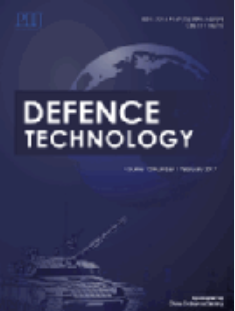导弹尾迹粒子在跨空域环境中的随机游走弥散模型
IF 5
Q1 ENGINEERING, MULTIDISCIPLINARY
引用次数: 0
摘要
导弹提供远程精确打击能力,已成为现代战争的基石。导弹在主动飞行阶段形成的尾迹云对高空环境观测和目标探测与跟踪提出了重大挑战。现有的研究主要集中在特定的空域,在理解长分散时间、宽高度范围和可变大气条件对导弹尾迹云的影响方面留下了严重的空白。为了解决这些空白,本文发展了一种基于拉格朗日随机游走模型的数值方法,该方法结合了各种速度变化项,包括风场差异引起的粒子速度、局部气体分子的热运动和尾迹云粒子之间的随机碰撞,以捕捉环境风场、大气条件和粒子浓度对尾迹云粒子运动的影响。采用与导弹飞行轨迹一致的通用坐标系来表示颗粒分布特性。所提出的方法与实验结果和现有的数值模拟结果吻合较好。结果表明,该模型有效地模拟了尾迹云的弥散状态,准确反映了大尺度风场变化和高度变化对尾迹云的影响,计算效率高。此外,模拟结果表明,在稀薄环境中,气体分子之间距离的增加有助于增强颗粒的分散,而较大的颗粒由于其更大的质量而表现出更快的分散速率。本文章由计算机程序翻译,如有差异,请以英文原文为准。
Random walk dispersion model for missile contrail particles in cross-airspace environments
Missiles provide long-range precision strike capabilities and have become a cornerstone of modern warfare. The contrail clouds formed by missile during their active flight phase present significant challenges to high-altitude environmental observation and target detection and tracking. Existing studies primarily focus on specific airspace regions, leaving critical gaps in understanding the effects of long dispersion times, wide altitude ranges, and variable atmospheric conditions on missile contrail clouds. To address these gaps, this article develops a numerical method based on the Lagrangian random walk model, which incorporates various velocity variation terms, including particle velocity caused by the difference of wind field, by the thermal motion of local gas molecules and by random collisions between contrail cloud particles to capture the influence of environmental wind fields, atmospheric conditions, and particle concentrations on the motion of contrail cloud particles. A general coordinate system aligned with the missile's flight trajectory is employed to represent particle distribution characteristics. The proposed method is in good agreement with the conducted experiments as well as with the available numerical simulations. The results demonstrate that the proposed model effectively simulates the dispersion state of contrail clouds, accurately reflecting the impact of large-scale wind field variations and altitude changes with high computational efficiency. Additionally, simulation results indicate that the increased distance between gas molecules in rarefied environments facilitates enhanced particle dispersion, while larger particles exhibit a faster dispersion rate due to their greater mass.
求助全文
通过发布文献求助,成功后即可免费获取论文全文。
去求助
来源期刊

Defence Technology(防务技术)
Mechanical Engineering, Control and Systems Engineering, Industrial and Manufacturing Engineering
CiteScore
8.70
自引率
0.00%
发文量
728
审稿时长
25 days
期刊介绍:
Defence Technology, a peer reviewed journal, is published monthly and aims to become the best international academic exchange platform for the research related to defence technology. It publishes original research papers having direct bearing on defence, with a balanced coverage on analytical, experimental, numerical simulation and applied investigations. It covers various disciplines of science, technology and engineering.
 求助内容:
求助内容: 应助结果提醒方式:
应助结果提醒方式:


